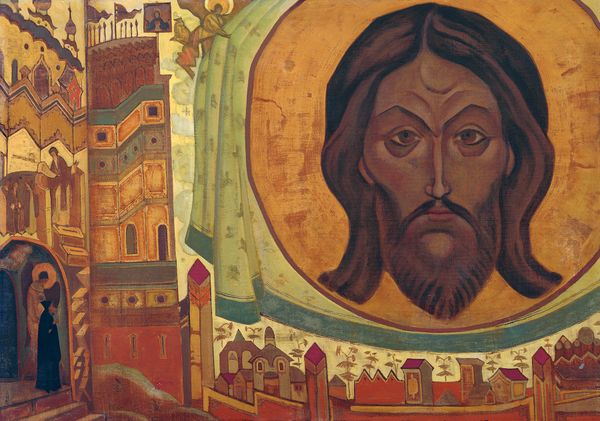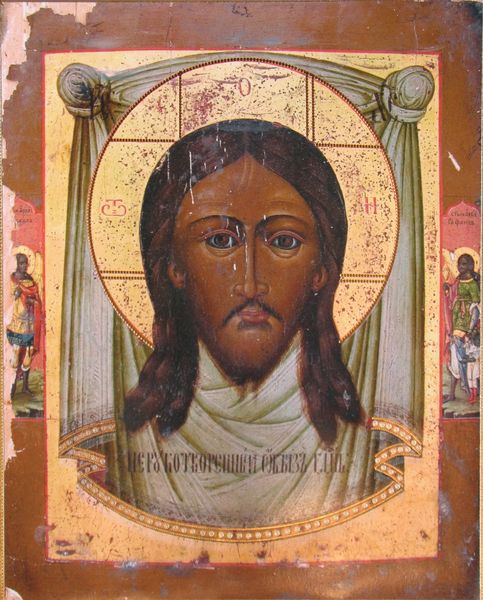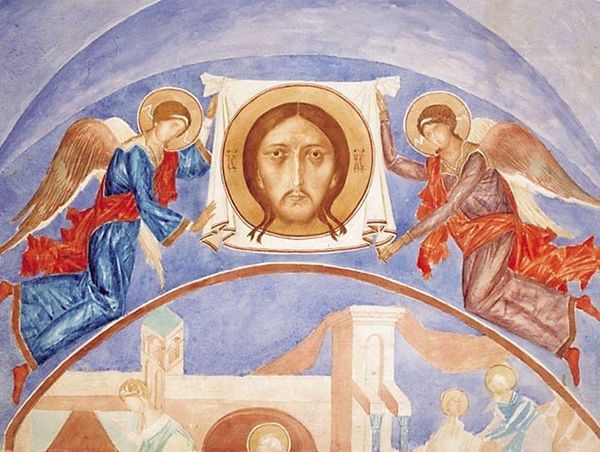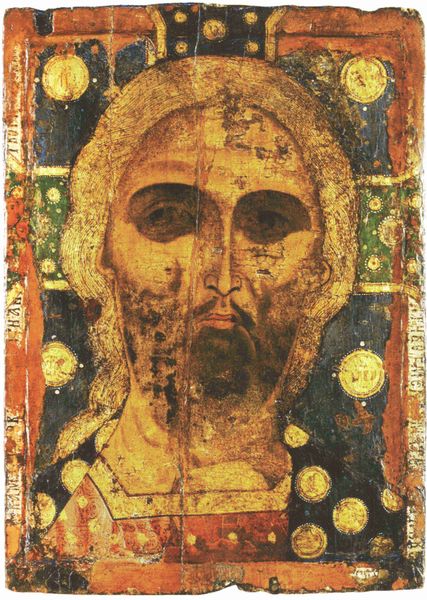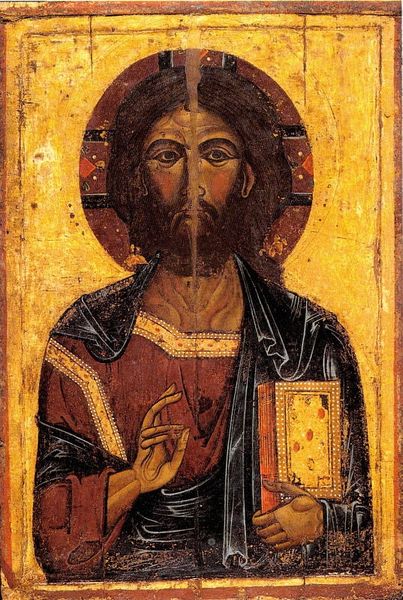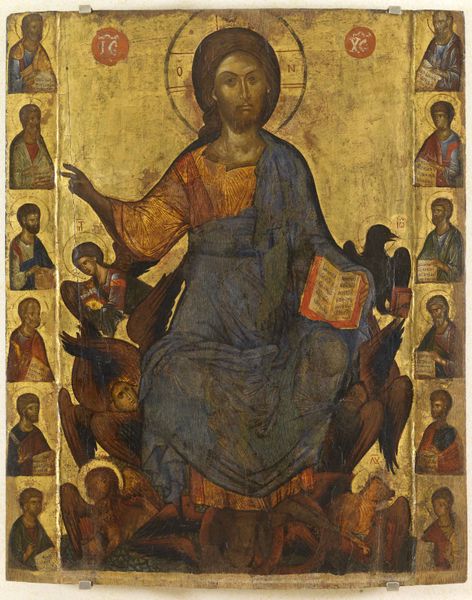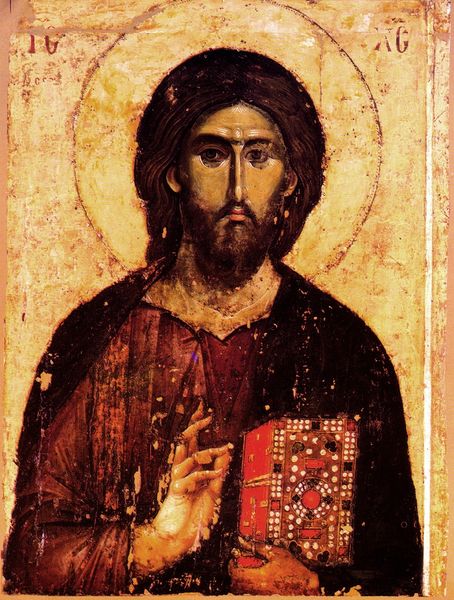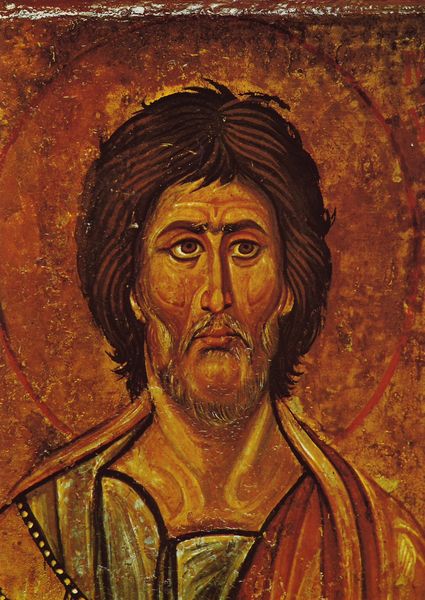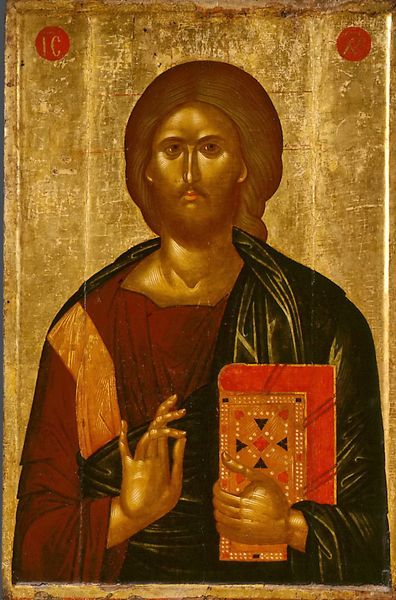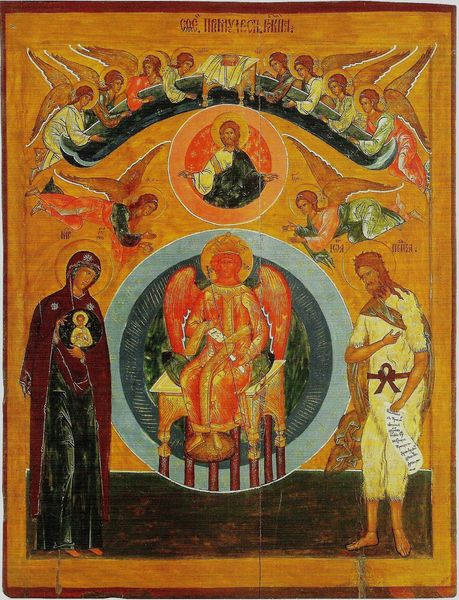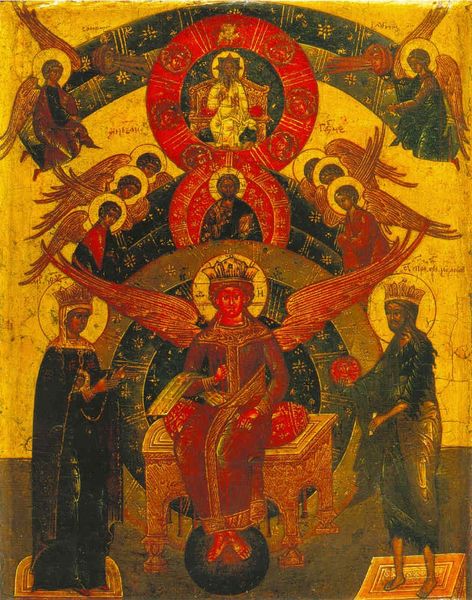
tempera, painting
#
byzantine-art
#
tempera
#
painting
#
oil painting
#
christianity
#
symbolism
#
christ
Copyright: Public domain
Curator: Let’s spend a moment reflecting on Nicholas Roerich's “Vernicle” from 1910, executed in tempera. The visage—the holy face of Christ—immediately captures one’s gaze. Editor: Immediately, I notice the somewhat fragmented feel, almost mosaic-like. And yet, there is an inner luminosity. What strikes me most is the texture; how deliberate each individual application seems to be. I find the geometry particularly comforting. Curator: Yes, I sense Roerich attempting to grasp at that ephemeral feeling—the almost childlike immediacy in confronting something sacred. Roerich was known for his intense spirituality and Theosophical leanings, seeking a profound connection with the divine. Perhaps that’s why this face appears simultaneously stern and welcoming. The painting does echo the aesthetics of Byzantine icons. It's so explicitly religious! Editor: Roerich has used tempera here, rather than, say, oil paints—that strikes me as an extremely deliberate choice. The binding properties of egg yolk as the binder really brings a singular opacity. This process has its own established labor. Consider the meticulous planning. Someone had to consider pigments available and prepare these with hand, layering colour by hand using egg as emulsion binder. Tempera demands precision but it offers incredible saturation. A kind of devotional labor is implied here too—labor mirroring piety, wouldn't you say? Curator: Precisely! I think it also highlights the materiality, as you suggested. You sense the dust, the earth from which all of it originates. See the little town built right there! Even though the icon focuses our eye directly to the face, the architecture around the portrait looks like a dream made solid. It is fascinating and strangely comforting to know, isn't it? Editor: It’s interesting how he integrates architectural motifs; framing this supposed "authentic" likeness with built environments and human construction. We tend to isolate a thing called "religious feeling", and forget the way material objects mediate these intangible feelings, from the architecture of the Church to the hand ground tempera. We encounter sacredness precisely because it has been created—we consume spirituality, one could provocatively argue! Curator: What an incredibly insightful observation. This piece embodies his unique pursuit of meaning, doesn’t it? Thank you, I now have an even deeper respect and appreciation for its creation. Editor: Indeed. This careful application of labor and materials transforms what could be simply an image into a resonant experience, doesn’t it? Thank you, that was eye-opening.
Comments
No comments
Be the first to comment and join the conversation on the ultimate creative platform.
